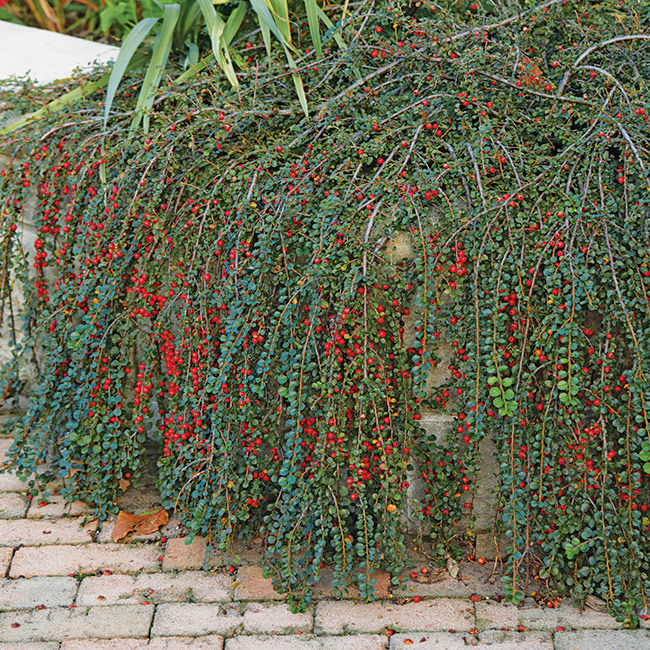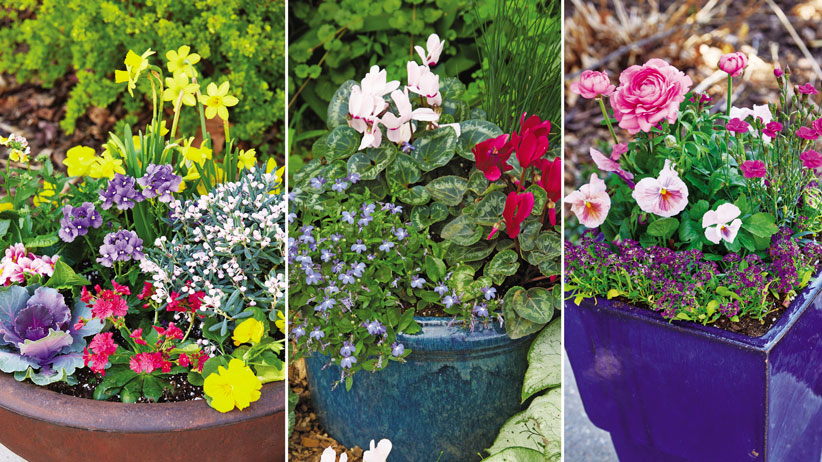
Enjoy year-round interest with Hesse cotoneaster
With its ruby-colored berries in the fall and handsome foliage, Hesse
cotoneaster is a gem in the garden. Low growing and wiry, it takes off once
planted, easily growing up to 5 feet across in even the toughest soils. Used as a ground cover or on slopes, it can root wherever branches touch the soil, and is outstanding draping over a retaining wall or crawling over boulders in a rock garden.
Hesse cotoneaster (Cotoneaster hessei)
Type Shrub
Blooms Pink flowers in late spring
Light Full sun to part shade
Soil Moist, well-drained
Pests None serious
Size 12 to 18 in. tall, 36 to 60 in. wide
Hardiness Cold hardy USDA zones 4 to 7
Enjoy multiseason color
Hesse cotoneaster’s long, stiff branches are neatly defined with rows of round, glossy green leaves lining each side. In late spring, small pink flowers grace the branches, followed by red berries growing tightly along the stem, echoing the similarly shaped foliage. The berries persist into winter and are an edible option for wildlife when other food sources are waning.
You Might Also Like:
Front Yard Garden with Multiseason Appeal
Best Plants with Berries for Birds
5 Multiseason Shrubs
Hesse cotoneaster is easy to grow
Plant this four-season beauty in full sun to get the most berries and brighter burgundy winter foliage color. In the warmer zones of its range, Hesse cotoneaster can be evergreen, but in colder regions, its foliage darkens and dries up, falling by late winter, leaving the architectural stems. Use a spring rake in early spring to knock off lingering dried leaves, as well as pull off debris that may have blown in and become trapped in the stems.
Simple pruning
Hesse cotoneaster can be pruned any time of the year, but rarely needs it.
Trim out dead branches or thin, tangled stems in early spring if necessary. In spots where branches trail or drape, if you need to prune, it’s best to cut a stem at the plant’s base to encourage a flowing branch habit — if you prune it back halfway, you’ll get side branching that might give the shrub a choppy appearance.
Pruning Tools You Might Like:
Hand Pruner
Long Reach Cut-and-Hold Pruner
Extendable Lopper
Companion plants for Hesse cotoneaster in the garden
With its low profile, Hesse cotoneaster is easy to tuck under larger shrubs or trees. Grow it with plants that have winter interest or attract wildlife to highlight its late-season appeal. Here are a few great companions:
- Coneflower (Echinacea purpurea spp. and hybrids)
- Red-twig dogwood (Cornus stolonifera spp. and hybrids)
- Japanese maple (Acer palmatum hybrids)
- Weeping Norway spruce (Picea abies 'Pendula')
- Oakleaf hydrangea (Hydrangea quercifolia spp. and hybrids)
















